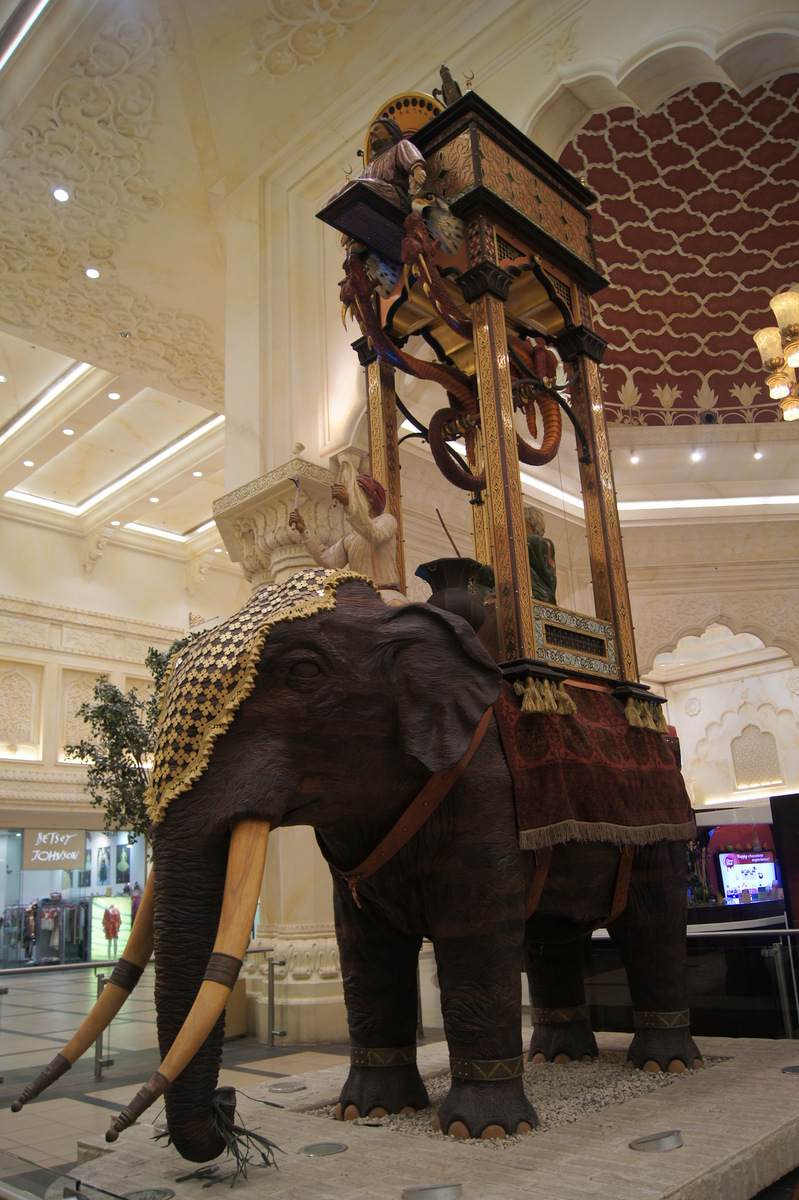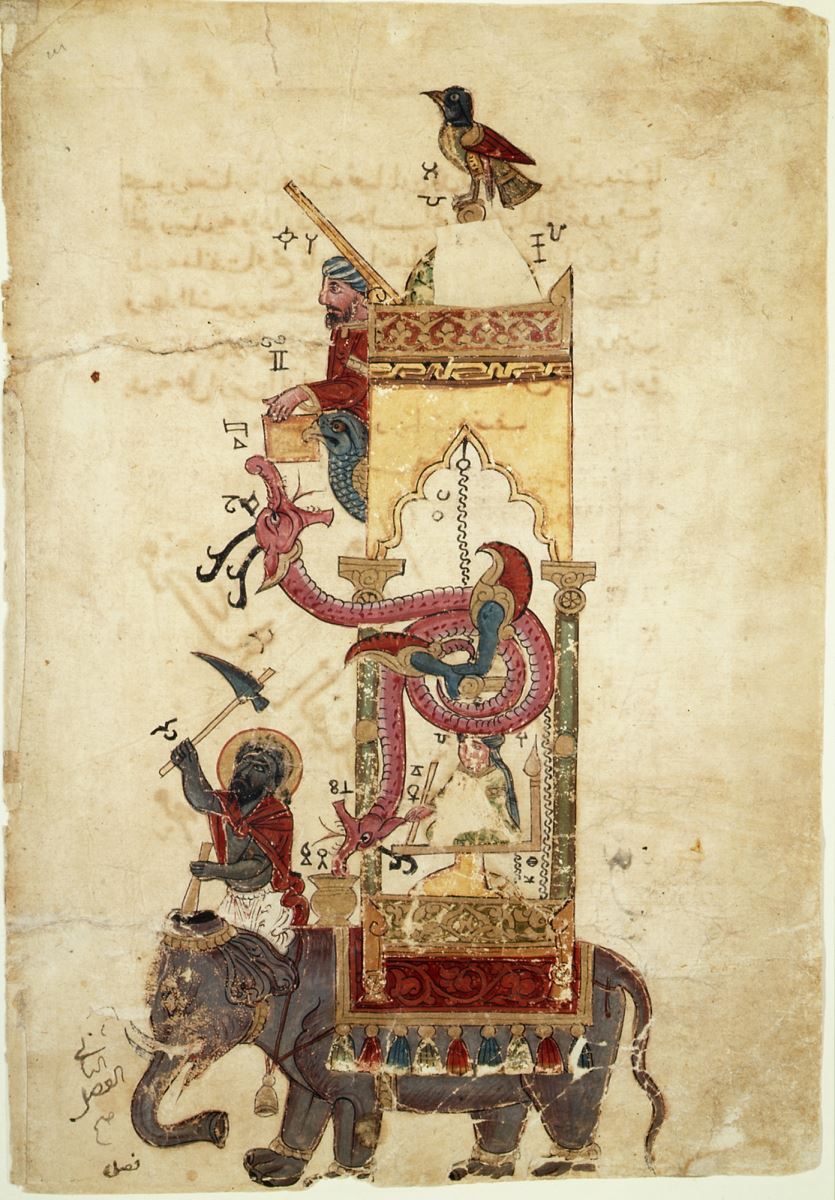adi'al-Zaman al-Jazari was an Arab engineering scientist and inventor who lived during what is referred to as the “Golden Age of Islam” during the 12th and 13th centuries. Among his many inventions was the Elephant Clock; it consisted of a weight-powered water mechanism in the form of an Asian elephant. All the elements of the clock were kept in a housing on top of the elephant; they were designed to move and make sound each half hour. In addition to telling the time, the clock celebrated the universality of Islam by incorporating elements from China, Egypt, India, Iraq, Phoenicia, and Spain.
Al-Jazari built his clock in the shape of an elephant with a chair on its shoulders. On the column of the chair corners there is a citadel with a small dome on the citadel and a bird on the dome. A balcony is set on the citadel in the way to the elephant’s head; a man is sitting on the balcony with two falcons on the right and left sides of the man.
Between the columns of the balcony lies an arm with two snakes coiled on it, a hemisphere on the center of the chair, and a platform on which there is a clerk holding a pencil in his hand. On the platform is situated an arc that is divided to 7½ degrees; a handler sits on the elephant neck, holding an axe in his right hand and a staff in his left. Two vases are on the two sides of the elephant neck.
When the pencil of the clerk comes to 7½ degrees in half an hour, the bird sings; half of one hole becomes white; the man sitting on the balcony lifts his hand up from the falcon bill on his right side and puts his left hand on the falcon bill on his left side. A ball falls from the falcon bill on the right side into the snake’s mouth on the right side; the snake brings the ball in the vase on to the right shoulder of the elephant; the handler of the elephant thrusts at the elephant head with his axe; he lifts his hand with a staff and beats on the elephant head.
The ball comes out from the elephant chest; a bell hanging on its belly falls, making a sound, consequently announcing that half an hour passed. The pencil of the clerk comes out of the degree sign, after which the same process is repeated for the falcon and the snake on the left side; this time, one hole becomes completely white indicating that one hour has passed.

Al-Jazari's 900 year old automatic elephant clock that exhibited the principles of physics and mechanical engineering stands today as an example of the Muslim origins of modern automation and robotics. The detailed design drawings and instructions are illustrated in Al-Jazari’s 1206 CE Book of Knowledge of Ingenious Mechanical Devices, which is a manuscript describing 50 machines such as animal and humanoid automata, automatic gates and doors, as well as clocks.
References
www.1001inventions.com
http://museum.kaust.edu.sa
http://inhabitat.com
The article was first published in print in SCIplanet, Winter 2016 Issue.
